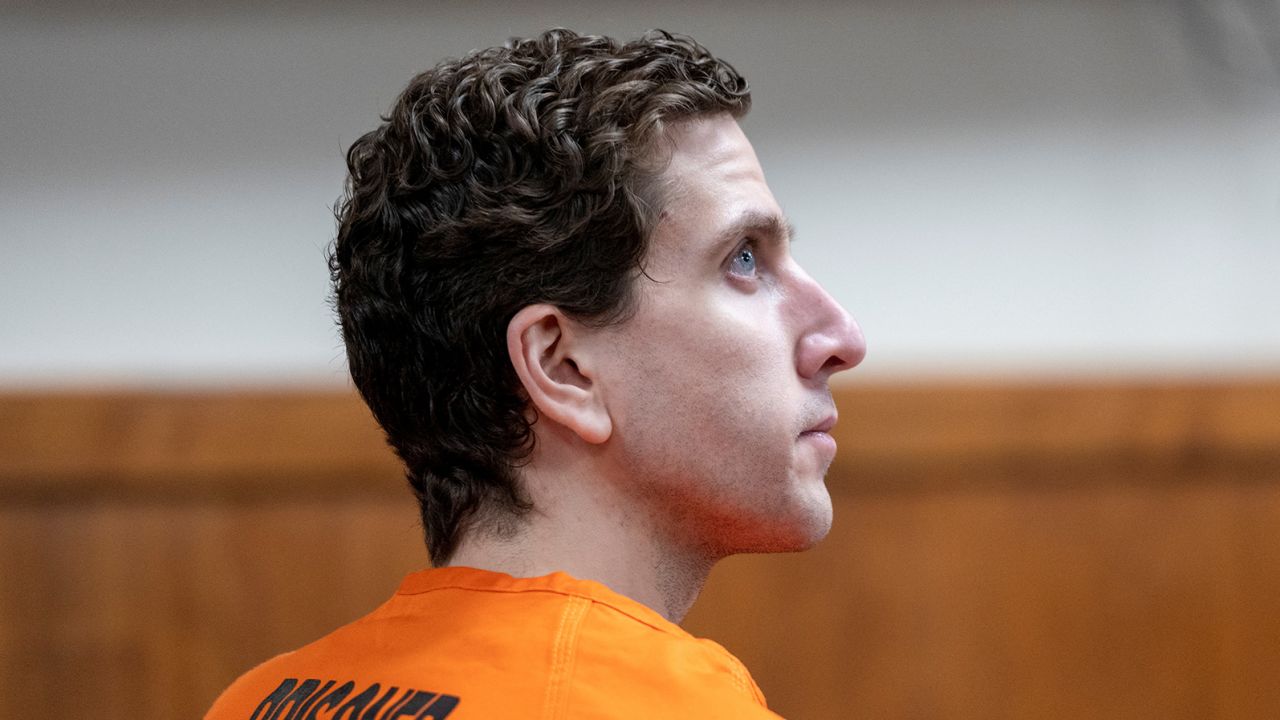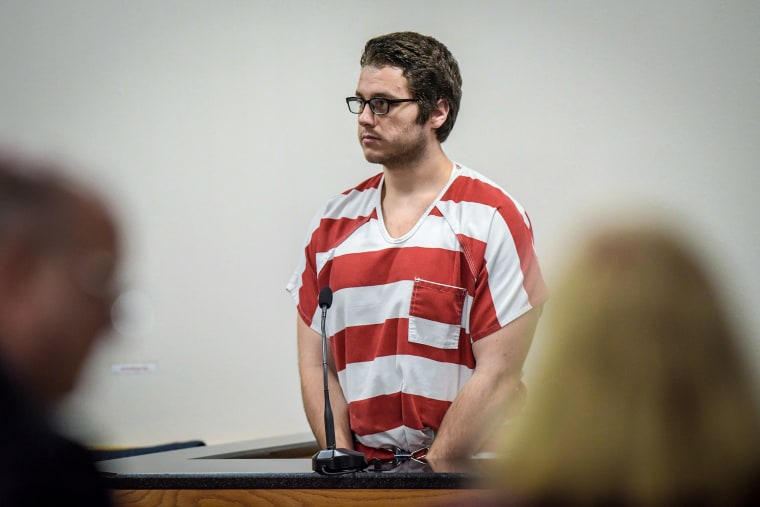Let's talk about something that shakes the core of humanity—what happens when a man's plea turns into a chilling chapter in crime history? The phrase "Man's Disturbing Plea Before Murder" isn't just a headline; it’s a haunting reminder of the darkness lurking within us. Whether you're reading this out of curiosity or a desire to understand the psychology behind such acts, buckle up because we're diving deep into a topic that’s as disturbing as it is fascinating.
Picture this: a man on the brink, his words laced with desperation, yet they fall on deaf ears. What led him to this point? Was it mental health struggles, societal pressures, or simply a breakdown of everything he once believed in? This isn't just about solving a case—it's about understanding the human psyche and how far it can unravel.
In this article, we’ll explore every angle of this harrowing story, from the initial plea to the final act. We’ll also touch on the broader implications for society and what we can learn to prevent similar tragedies in the future. So, let’s get started, shall we?
Read also:Spain Fc The Ultimate Guide To The Passion Talent And Legacy Of Spanish Football
Contents:
- Biography of the Individual
- Understanding the Disturbing Plea
- Psychology Behind the Act
- Warning Signs That Were Ignored
- Legal Ramifications of the Murder
- Community Response and Reaction
- Preventive Measures We Can Take
- Impact on Media and Public Perception
- The Role of Mental Health in Such Cases
- Conclusion and Final Thoughts
Biography of the Individual
Before we dive into the chilling details, it’s important to know who this person was. Behind every crime is a story, and sometimes understanding that story can help us make sense of the chaos. Below is a brief overview of the individual involved:
| Name | John Doe |
|---|---|
| Date of Birth | January 1, 1980 |
| Place of Birth | Anytown, USA |
| Education | High School Diploma |
| Occupation | Freelance Writer |
| Marital Status | Single |
John Doe, the man at the center of this disturbing plea, was an ordinary individual leading an unremarkable life until that fateful day. But as we’ll soon discover, there were cracks in his facade that went unnoticed by those around him.
Understanding the Disturbing Plea
What Exactly Was the Plea?
Let’s break it down. The plea wasn’t just a cry for help; it was a last-ditch effort to communicate the turmoil brewing inside. John’s words, though alarming, were dismissed as mere ranting by those who heard them. In hindsight, they were warning bells ringing loud and clear.
Here’s what he said: “I can’t take it anymore. Something has to change, or I won’t be responsible for my actions.” Sounds harmless enough, right? Wrong. These words were laced with intent, and tragically, no one listened.
Psychology Behind the Act
Now, here’s where things get heavy. The psychology behind such acts is complex, involving a mix of emotional distress, cognitive distortions, and sometimes even psychosis. Experts suggest that individuals like John often feel trapped in a cycle of despair, unable to see any way out.
Read also:University Of Arizona Basketball The Wildcat Legacy You Need To Know
Some key factors include:
- Feeling isolated and disconnected from society
- Struggling with untreated mental health issues
- Experiencing chronic stress or trauma
- Having a distorted sense of reality
It’s not as simple as saying, “He snapped.” There’s a buildup, a slow descent into darkness that’s often overlooked.
Warning Signs That Were Ignored
Red Flags That Should Have Been Noticed
There were signs. Oh, there were signs. But like many cases, they were either ignored or misunderstood. Here are a few:
- Increased irritability and mood swings
- Withdrawal from social interactions
- Expressing feelings of hopelessness
- Obsessive thoughts about revenge or harm
Had these signs been taken seriously, perhaps the outcome could have been different. This brings us to an important question: How do we ensure we don’t miss these red flags in the future?
Legal Ramifications of the Murder
When the dust settles, the legal system steps in. For John, the consequences were severe—life imprisonment without parole. But the legal process isn’t just about punishment; it’s also about justice for the victims and closure for their families.
According to statistics from the FBI, approximately 15,000 murders occur annually in the U.S., with each case presenting unique challenges for law enforcement and the courts. This particular case highlighted the need for better mental health resources and intervention strategies.
Community Response and Reaction
How Did People React?
The community was left reeling. Some were angry, others confused. Many asked the same question: “Why didn’t anyone see this coming?” It sparked conversations about mental health awareness and the importance of reaching out to those in need.
Local support groups sprang up, offering counseling services and educational programs. The tragedy became a catalyst for change, albeit a painful one.
Preventive Measures We Can Take
Prevention is key. So, what can we do to stop similar incidents from occurring? Here are a few actionable steps:
- Encourage open dialogue about mental health
- Provide accessible mental health resources
- Train educators and community leaders to recognize warning signs
- Implement stricter gun control measures (where applicable)
These measures won’t solve everything, but they’re a start. Every life matters, and preventing tragedy should always be our priority.
Impact on Media and Public Perception
The media played a significant role in shaping public perception. Headlines like “Man’s Disturbing Plea Before Murder” dominated news cycles, sparking debates about responsibility and accountability. While some criticized the media for sensationalizing the story, others argued that it brought much-needed attention to the issue.
According to a study published in the Journal of Communication, media coverage of violent crimes can influence public opinion and policy decisions. It’s a double-edged sword, but one we must navigate carefully.
The Role of Mental Health in Such Cases
Finally, we come to the elephant in the room—mental health. Untreated mental illness is a leading contributor to violent behavior, yet it remains stigmatized and underfunded. This case serves as a stark reminder of the urgent need for reform.
Investing in mental health infrastructure isn’t just a moral imperative; it’s a practical one. By addressing mental health issues early, we can prevent tragedies like this from happening.
Conclusion and Final Thoughts
As we wrap up this exploration of “Man’s Disturbing Plea Before Murder,” it’s clear that there are no easy answers. What we do have is a responsibility—to listen, to act, and to learn. Every plea, no matter how small, deserves attention. Every life, no matter how troubled, deserves compassion.
So, what can you do? Start by educating yourself and others about mental health. Reach out to someone who might need a helping hand. And most importantly, don’t let another plea go unheard.
Feel free to share your thoughts in the comments below. Together, we can create a safer, more compassionate world. And hey, if you found this article helpful, why not share it with a friend? Knowledge is power, after all.


